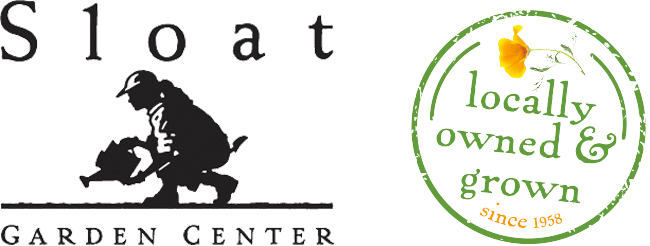We just read this article in the Chronicle’s Home & Garden section. Good stuff!
Goal for this yard – to be self-sustaining
Demi Bowles Lathrop, Special to The Chronicle
Saturday, May 24, 2008
Demi Bowles Lathrop, Special to The Chronicle
Saturday, May 24, 2008
I’ve always wanted to grow enough food in our garden to sustain my family. While that may be a stretch, we’re making a dent in our grocery bill.
My husband, Tom, and I cleared a 26-by-19-foot level of our terraced garden behind our home on Broadway in San Francisco, and this winter I put in a kitchen garden, with fruit trees, vegetables and herbs, and I am putting into practice many of John Jeavons’ biointensive farming ideas.Jeavons advocates building “living soil,” nutrient-rich soil bolstered with compost. Compost feeds the soil. If your soil is cool, rich, crumbly and parts easily with your trowel when you plant seedlings, you know you’ve got it. It may take a few months to build up a stash of compost, but it will be worth the effort.
I ferret out scraps from our kitchen – vegetables, fruit, eggshells, coffee grounds, tea dregs, fish heads and bones, even eggshell cartons – to feed our compost heap. Yard scraps, except for diseased rose leaves and weeds, get deposited there too. Because a good part of our vegetable garden once contained our compost heap, the soil is good and we did not feel the need to double dig, that is dig down, loosening soil some 2 feet deep.
If you don’t have the energy to make compost, you can buy it, or a cover crop will do. All that matters is to get nutrients into the soil.
Legumes such as fava beans add organic matter and nitrogen to the soil. They’re called “nitrogen fixers” because they collect nitrogen in nodules on their roots with the help of rhizobial bacteria. Nitrogen gets changed into a usable form, some for the plant itself and the rest for other plants. Just till the crop into the soil to boost it. Nitrogen boosts growth of root and shoot tissue.
Our plan: plant four main beds in the center, each 91 by 55 inches, with five beds along the periphery. All are raised. Narrow paths run between them. A freestanding apple tree anchors each center bed.
To optimize fruit production, we are growing a fig, mandarin orange and group of pears against the two garden walls. Pear varieties include ‘Seckel,’ ‘Bordeaux,’ ‘Beurre Clairgeau’ and ‘Atlantic Queen’ (an old French variety saved from an East Coast seashore garden). Not only do the trees provide food, but they also look pretty when in blossom, full of leaves or heavy with fruit.
You can grow your own vegetable starts. It’s not crucial, but you’ll save money and being using open-pollinated seeds, those that can produce seeds for your next year’s crop.
I built redwood seed boxes and started to plant seeds from several sources, but I’m most excited about those from Jeavons’ Bountiful Gardens company: ‘Alan Chadwick’s Rodan loose-leaf lettuce, ‘Cos’ lettuce, Armenian cucumber, ‘Chantenay’ carrots and ‘Sweet Rocket’ (‘Dame’s Violet’) to name a few.
Artichokes, snap and shelling peas, favas, ‘Oliver’ Brussels sprouts, chard, spinach, ‘Lacinato’ kale, lettuces, mache, French sorrel, ‘Walla Walla’ and cipollini onions, leeks, radishes and beets are already in the ground, many producing.
An old wrought-iron fence provides an instant trellis to test-run tomatoes this summer. These include: ‘Siletz,’ ‘St. Pierre’ and ‘Yellow Pear.’ Some funky herbs grow, such as feverfew, which looks like a small daisy with lime green leaves; lemon balm; burnet; lemon verbena; catnip for our cats; and Vietnamese coriander; along with mainstays.
The rules are simple here; common sense plays a strong role. Everything that goes into the garden comes from nature. Everything gets fed with compost and fish emulsion. While our neighbors aren’t thrilled with the fishy smell, once I start handing clumps of lettuce to them over the fence, they’ll forgive me.
There’s no shortage of bees here. Bumbles and leaf-cutters land on leek stalks and dart into feverfew, and hummingbirds suck nectar from flowering arugula.
Since land is in short supply, muscari, daffodils, foxgloves and climbing roses share the ground and give us flowers to bring indoors. All this happens on a wedge of land under a Monterey cypress where there just happens to be enough light. Pesky gophers, skunks, snakes and the resident dog and cats add suspense. How can this gardener outwit them and what crops will survive?
Who knows, it may be chickens next.



